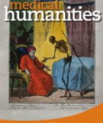Playing With Fear: A Field Study in Recreational Horror
Article published in Psychological Science
Abstract
Haunted attractions are illustrative examples of recreational fear in which people voluntarily seek out frightening experiences in pursuit of enjoyment. We present findings from a field study at a haunted-house attraction where visitors between the ages of 12 and 57 years (N = 110) were equipped with heart rate monitors, video-recorded at peak scare points during the attraction, and asked to report on their experience. Our results show that enjoyment has an invertedU-shaped relationship with fear across repeated self-reported measures. Moreover, results from physiological data demonstrate that the experience of being frightened is a linear function of large-scale heart rate fluctuations, whereas there is an inverted-U-shaped relationship between participant enjoyment and small-scale heart rate fluctuations. These results suggest that enjoyment is related to forms of arousal dynamics that are “just right.” These findings shed light on how fear and enjoyment can coexist in recreational horror.
Article
Marc Malmdorf Andersen, Uffe Schjoedt, Henry Price, Fernando E. Rosas, Coltan Scrivner and Mathias Clasen (202): Playing With Fear: A Field Study in Recreational Horror. Psychological Science, 1-14
Link to article.
Related
Haunted house researchers investigate the mystery of playing with fear
A field stydy in Recreational Horror accepted for publication in the journal Psychological Science. Read press release and see video.
Contact
Marc Malmdorf Andersen, Assistant Professor
Interacting Minds Centre, School of Culture and Society



